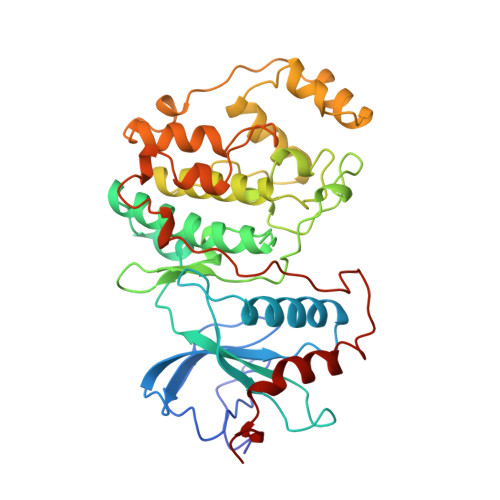Mutation of position 52 in ERK2 creates a nonproductive binding mode for adenosine 5'-triphosphate.
Robinson, M.J., Harkins, P.C., Zhang, J., Baer, R., Haycock, J.W., Cobb, M.H., Goldsmith, E.J.(1996) Biochemistry 35: 5641-5646
- PubMed: 8639522
- DOI: https://doi.org/10.1021/bi952723e
- Primary Citation of Related Structures:
1GOL - PubMed Abstract:
Among the protein kinases, an absolutely conserved lysine in subdomain II is required for high catalytic activity. This lysine is known to interact with the substrate ATP, but otherwise its role is not well understood. We have used biochemical and structural methods to investigate the function of this lysine (K52) in phosphoryl transfer reactions catalyzed by the MAP kinase ERK2. The kinetic properties of activated wild-type ERK2 and K52 mutants were examined using the oncoprotein TAL2, myelin basic protein, and a designed synthetic peptide as substrates. The catalytic activities of K52R and K52A ERK2 were lower than that of wild-type ERK2, primarily as a consequence of reductions in kcat. Further, there was little difference in Km for ATP, but the Km,app for peptide substrate was higher for the K52 mutants. The three-dimensional structure of unphosphorylated K52R ERK2 in the absence and presence of bound ATP was determined and compared with the structure of unphosphorylated wild-type ERK2. ATP adopted a well-defined but distinct binding mode in K52R ERK2 compared to the binding mode in the wild-type enzyme. The structural and kinetic data show that mutation of K52 created a nonproductive binding mode for ATP and suggest that K52 is essential for orienting ATP for catalysis.
Organizational Affiliation:
Department of Pharmacology, University of Texas Southwestern Medical Center, Dallas 75235, USA.
















